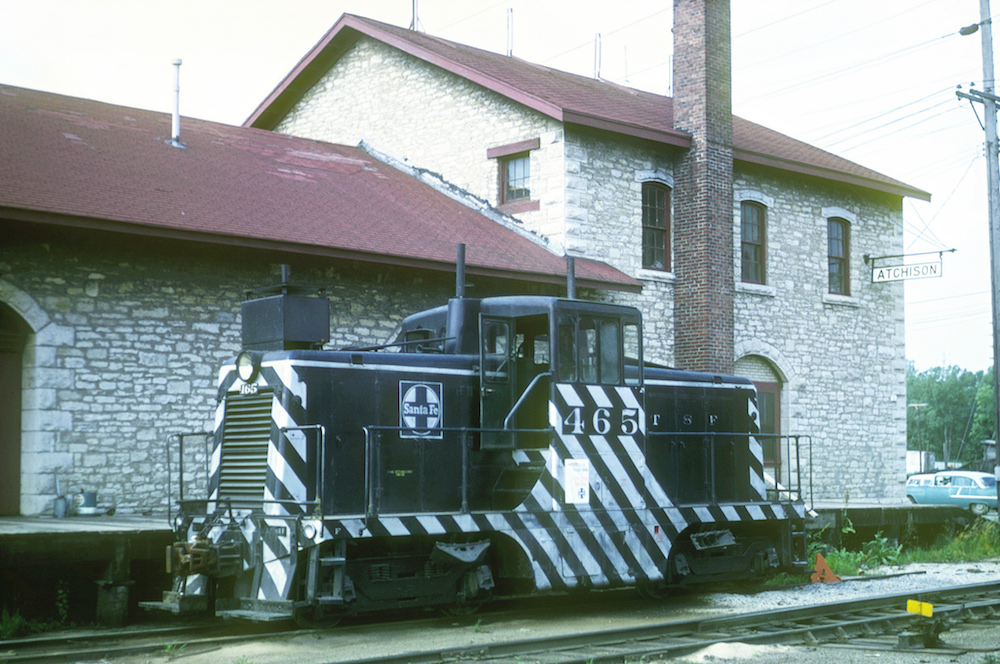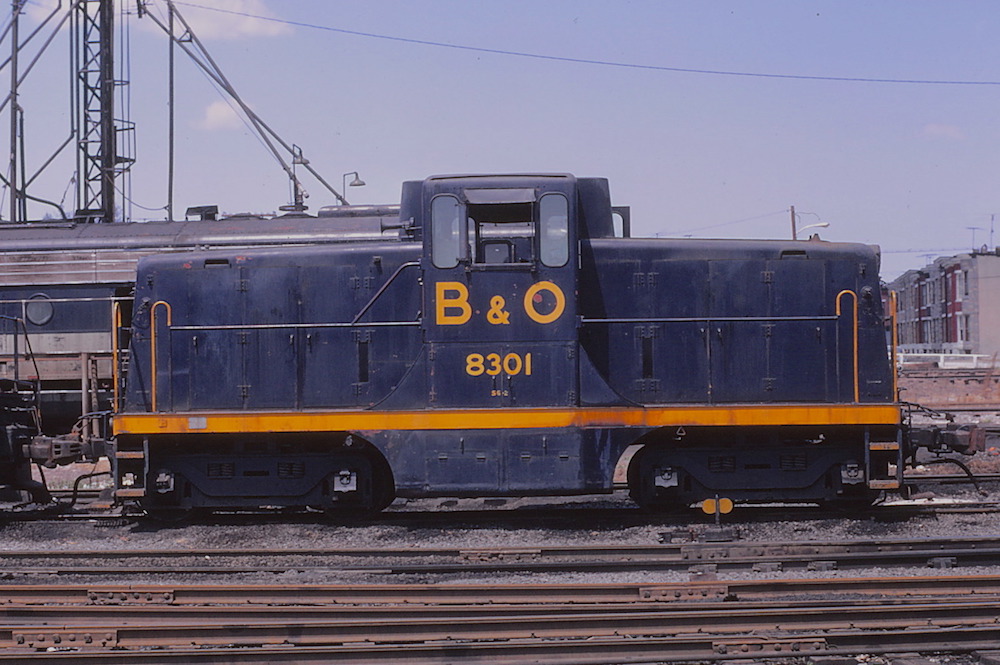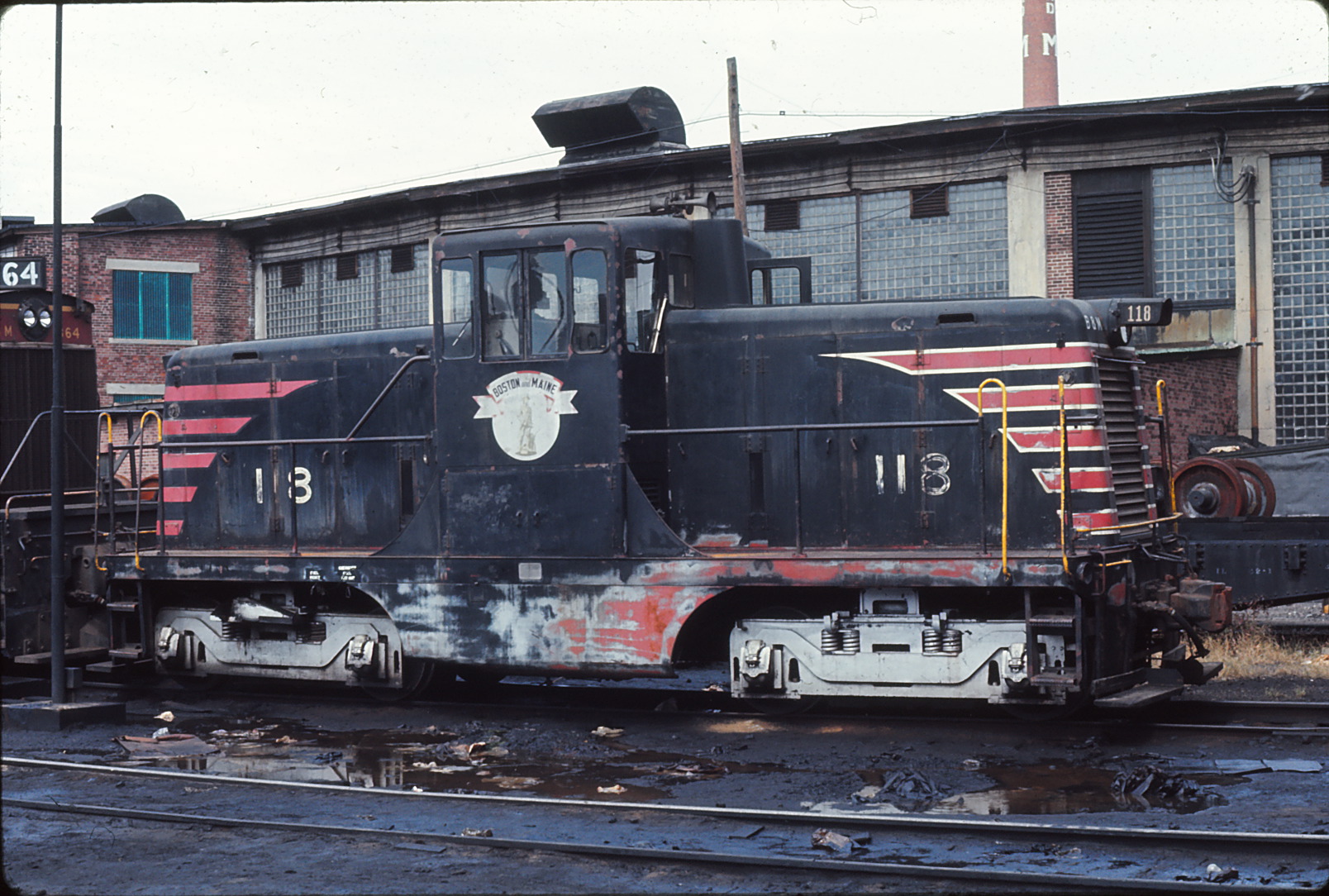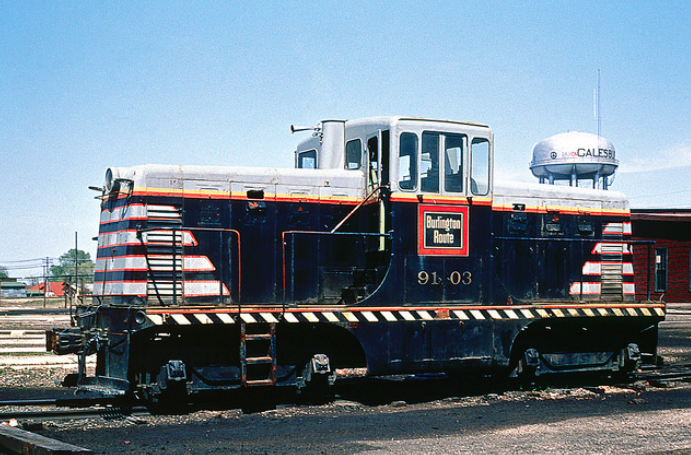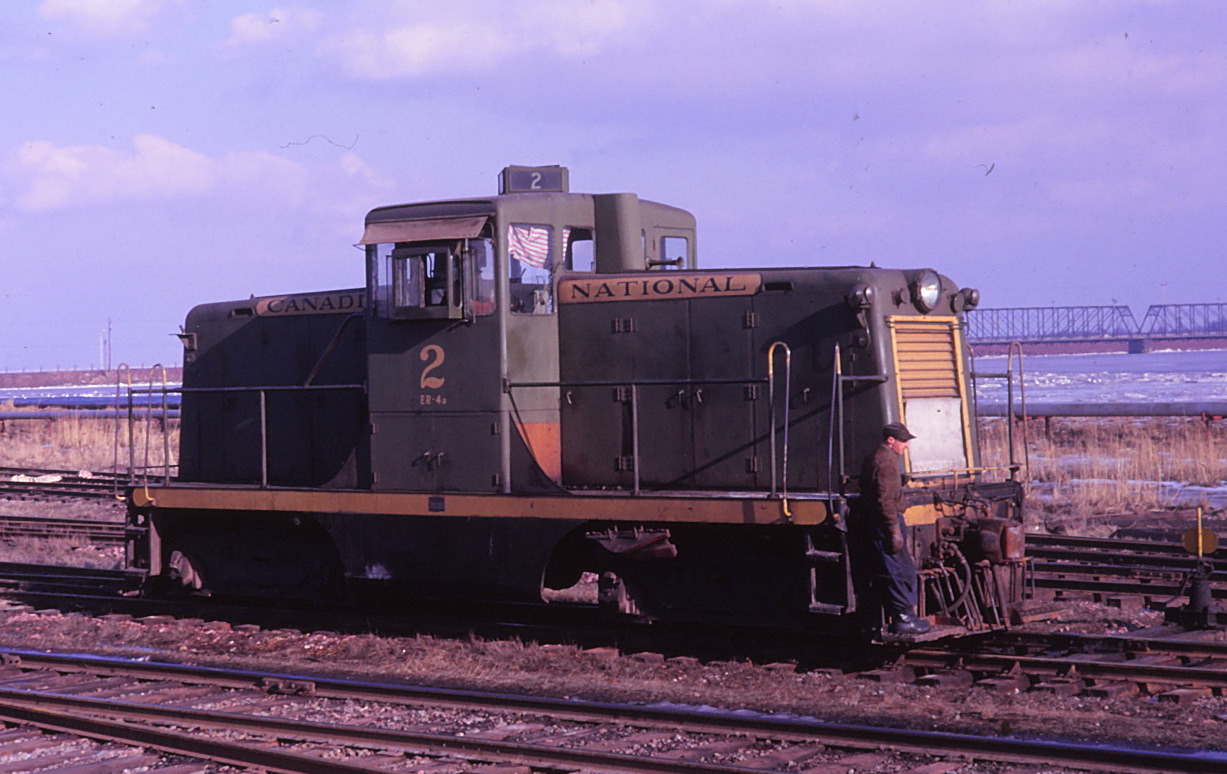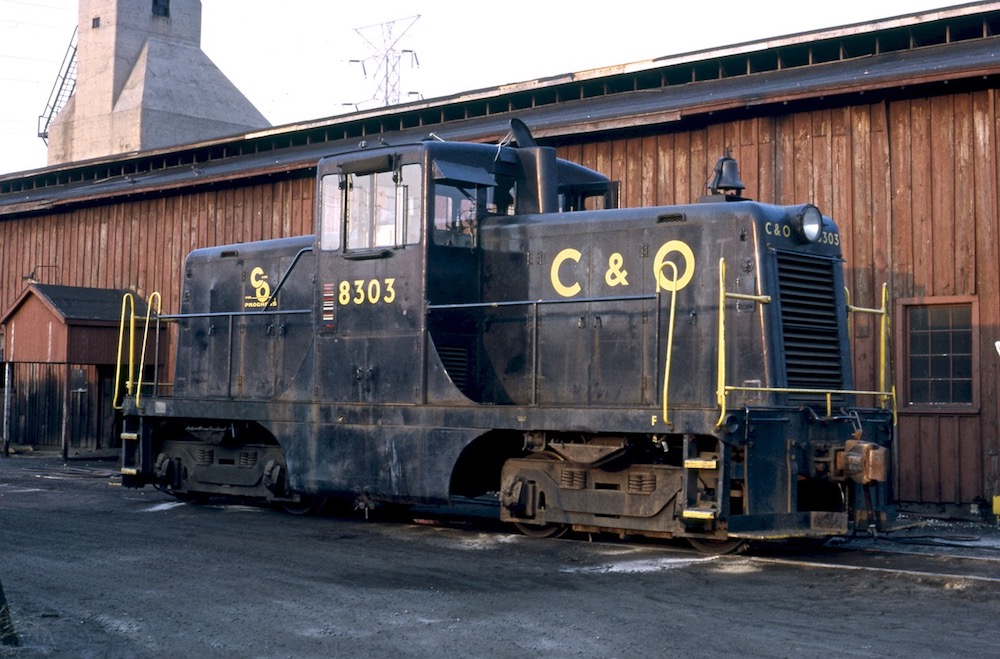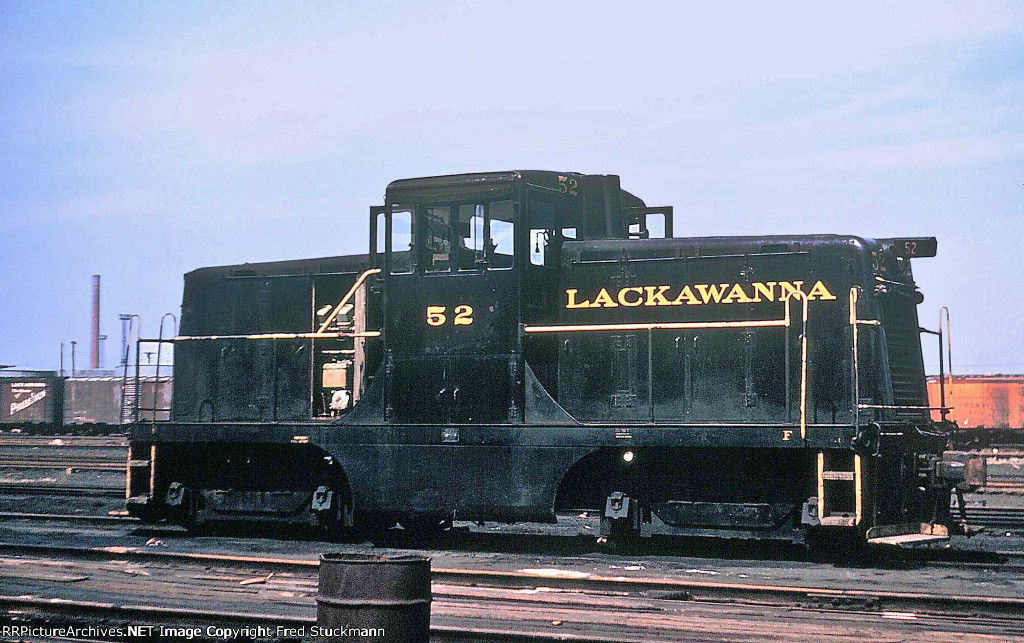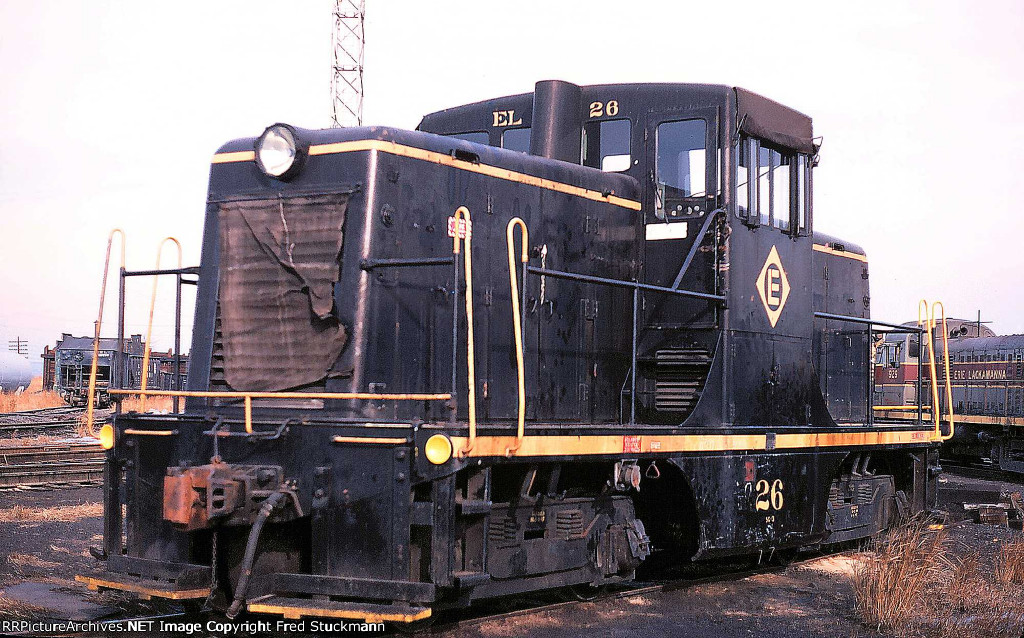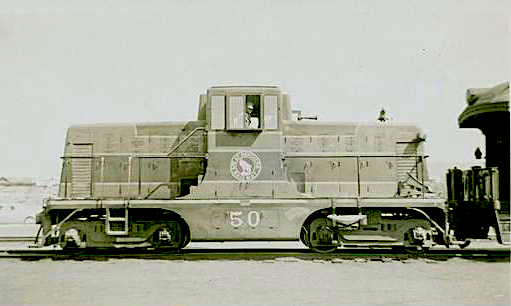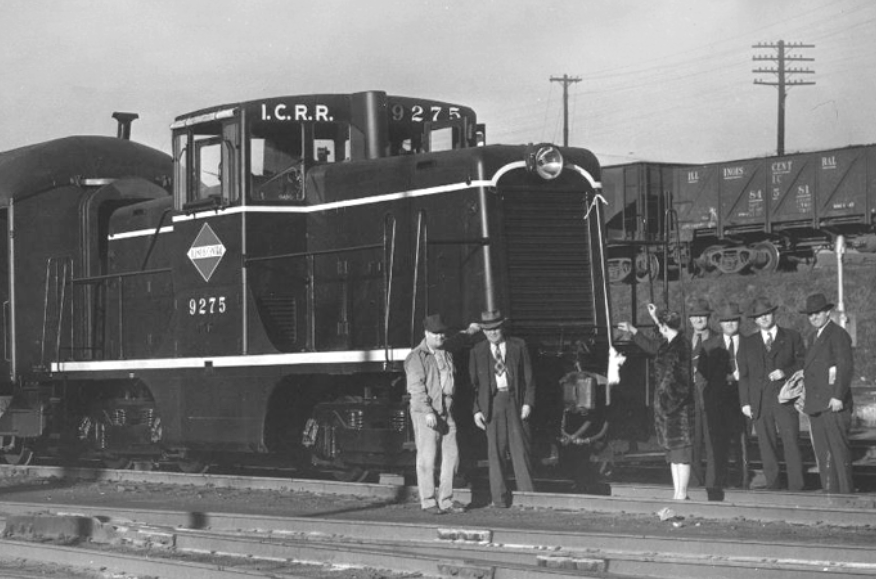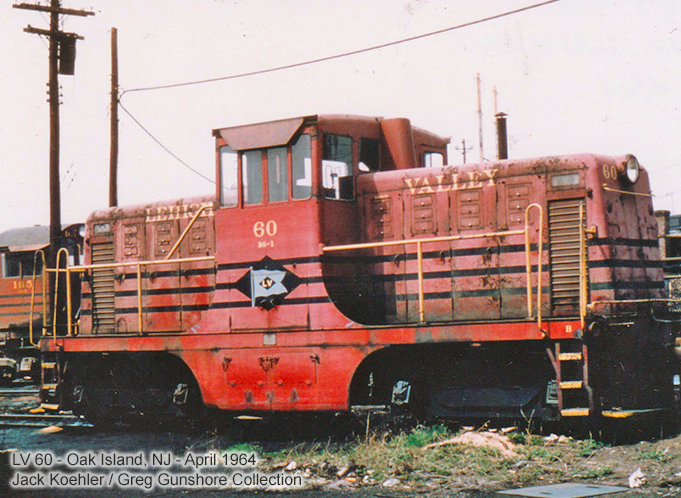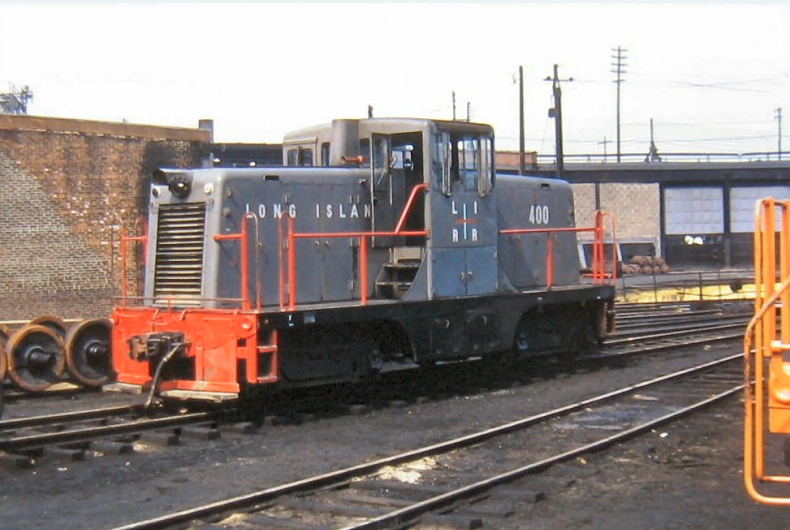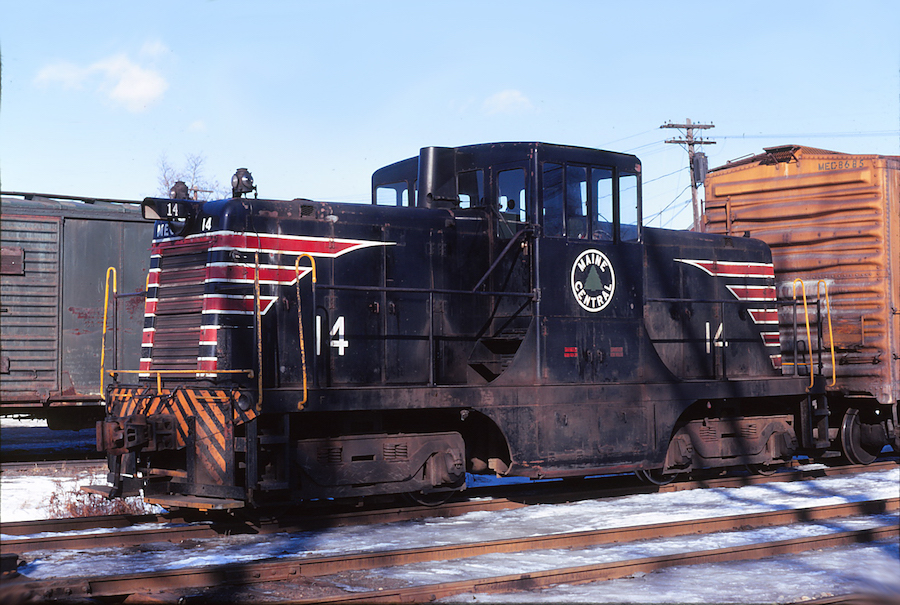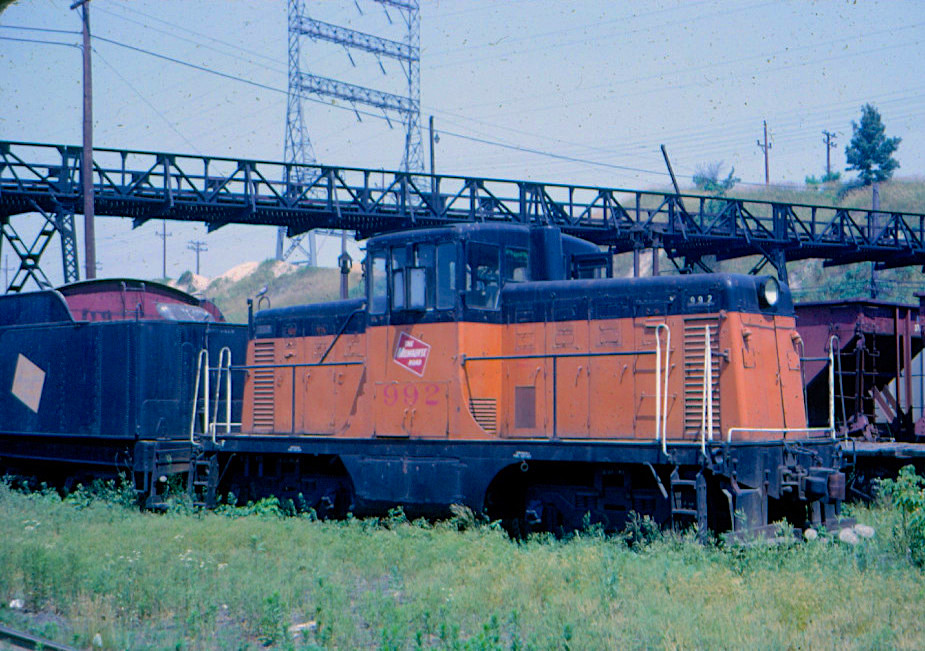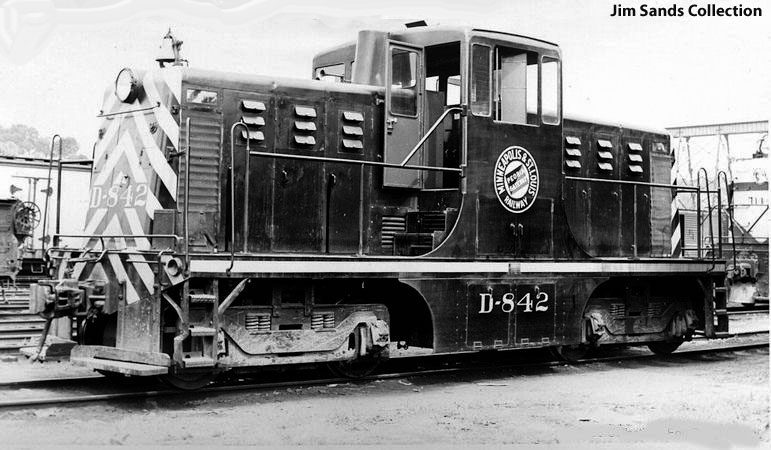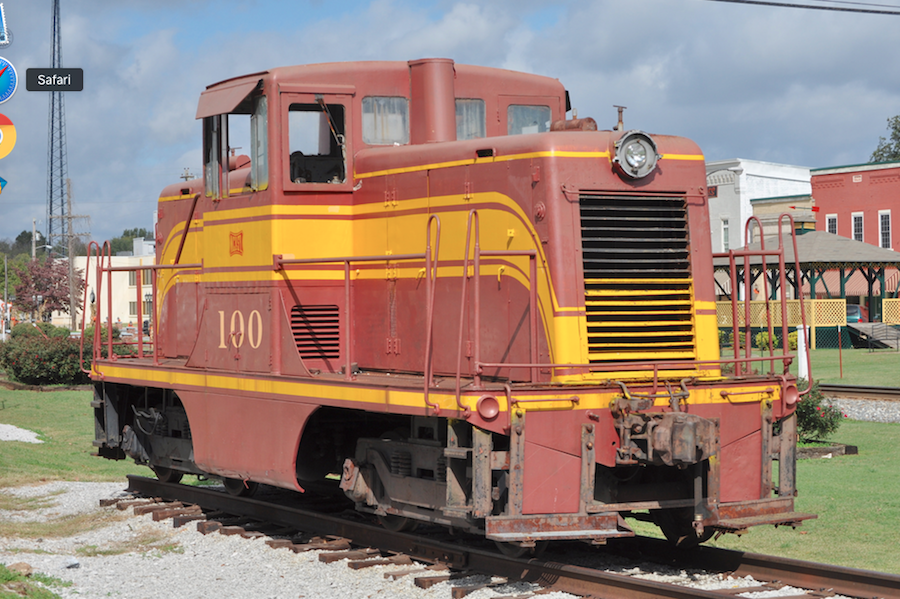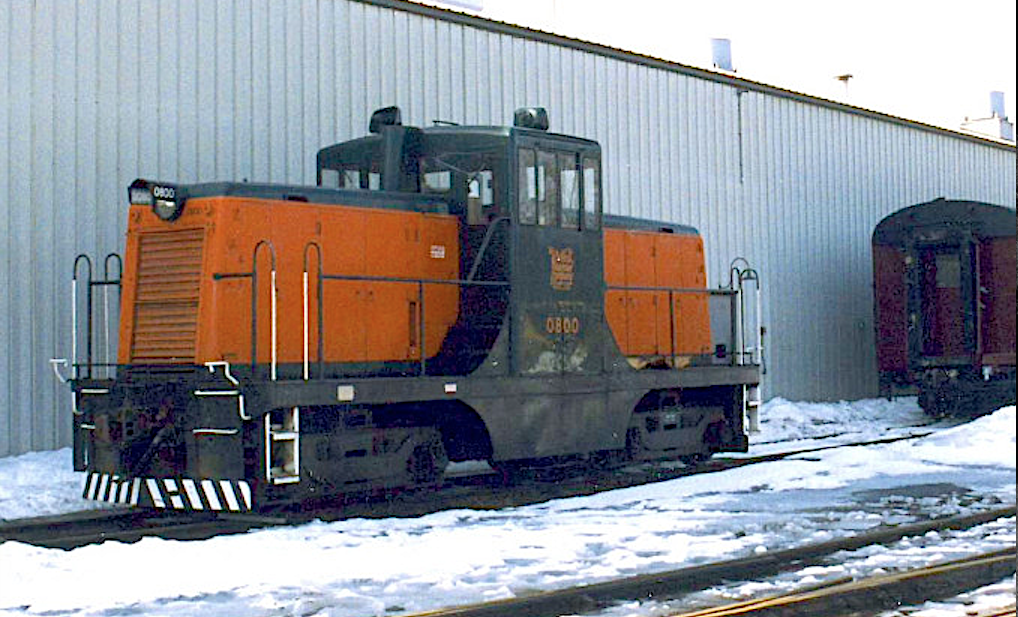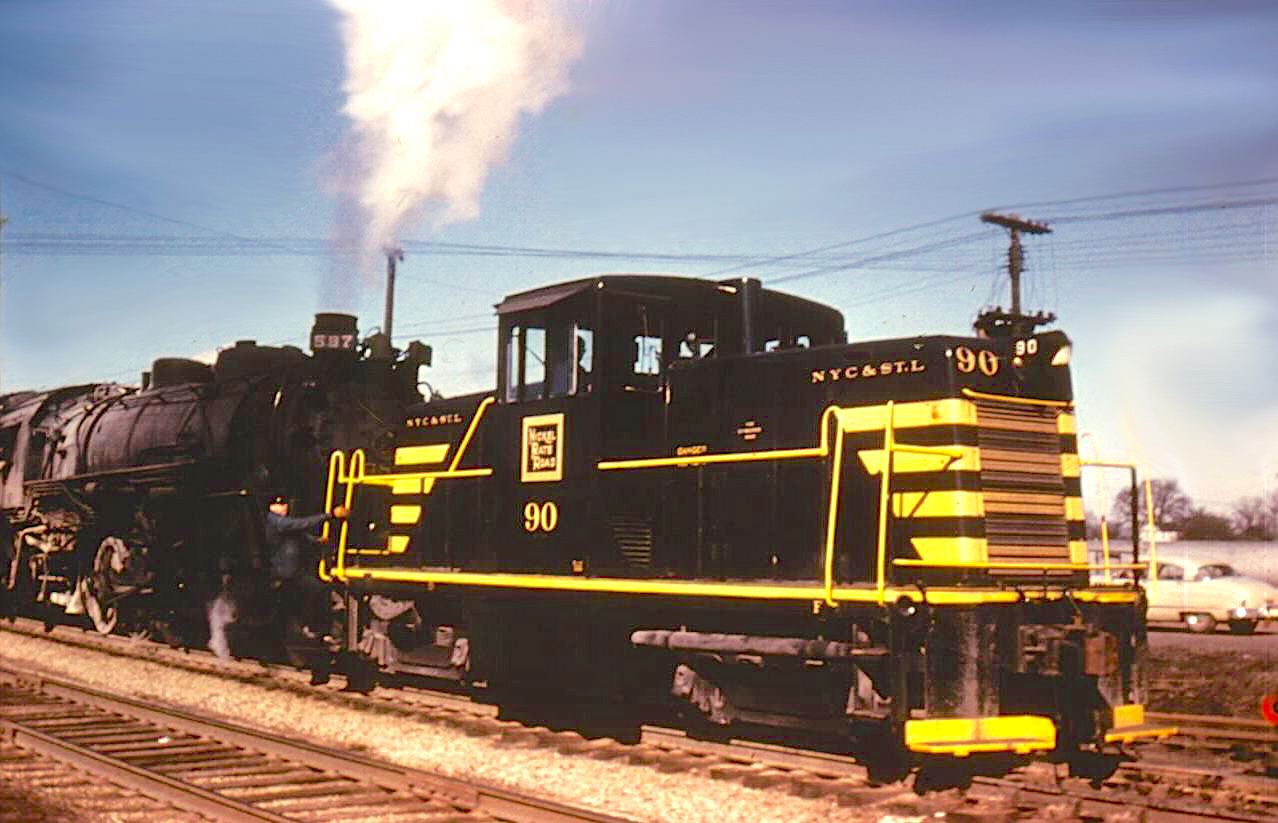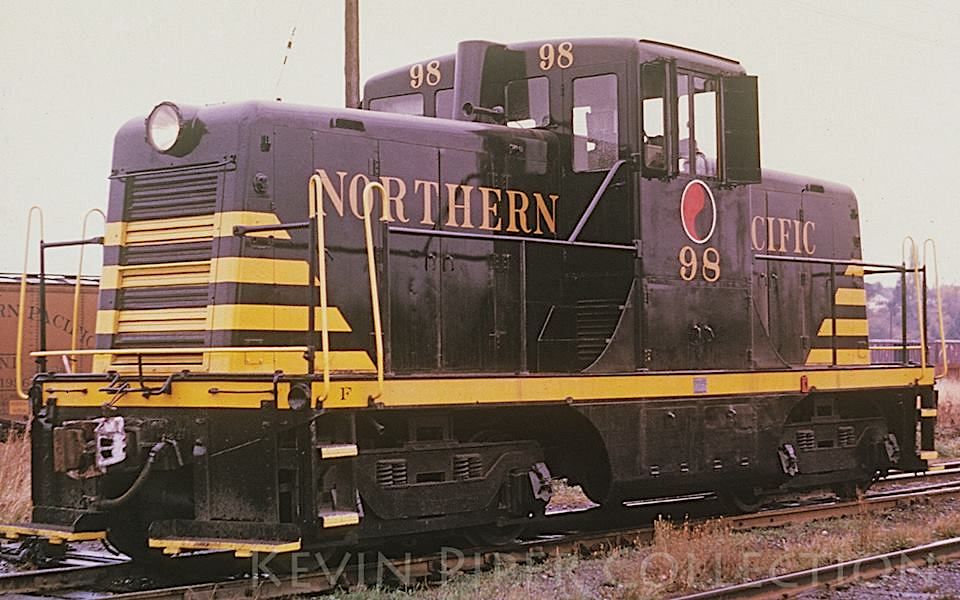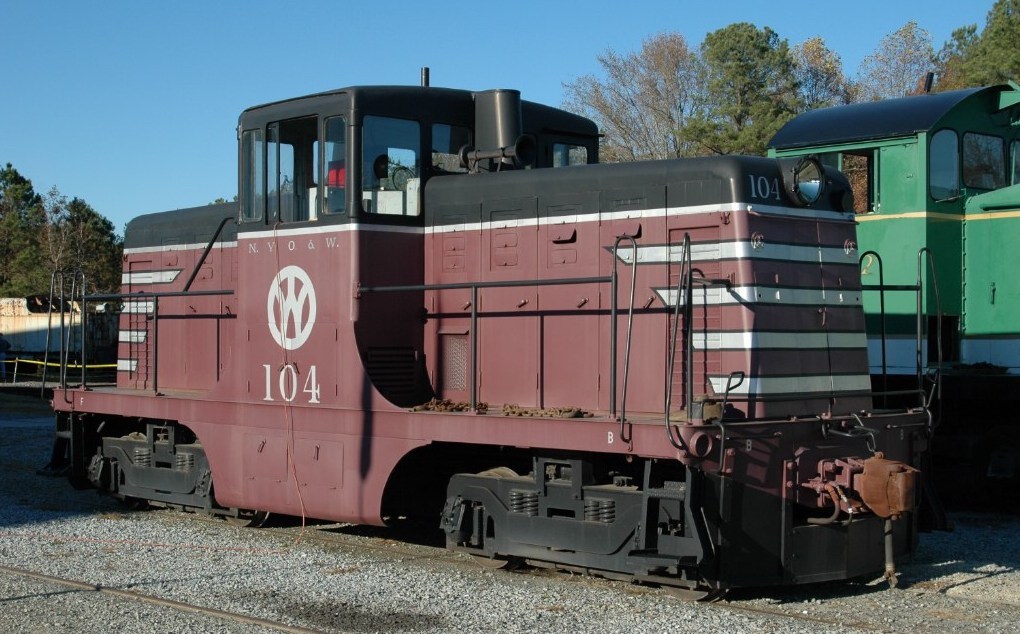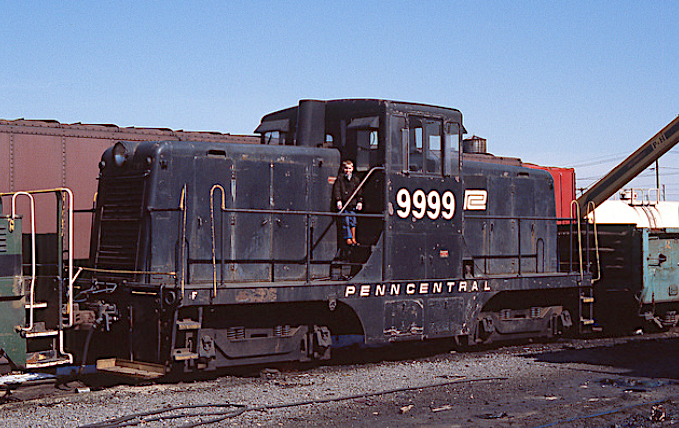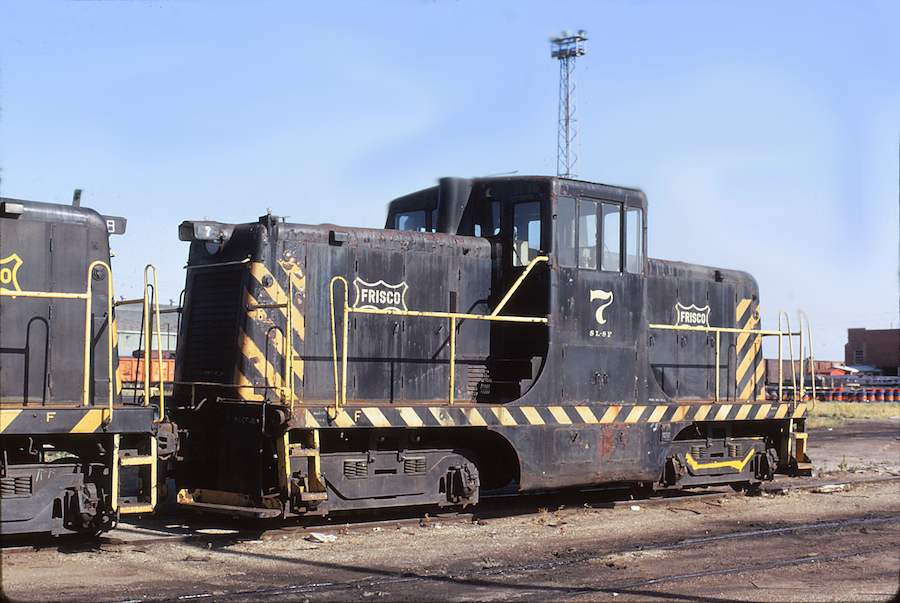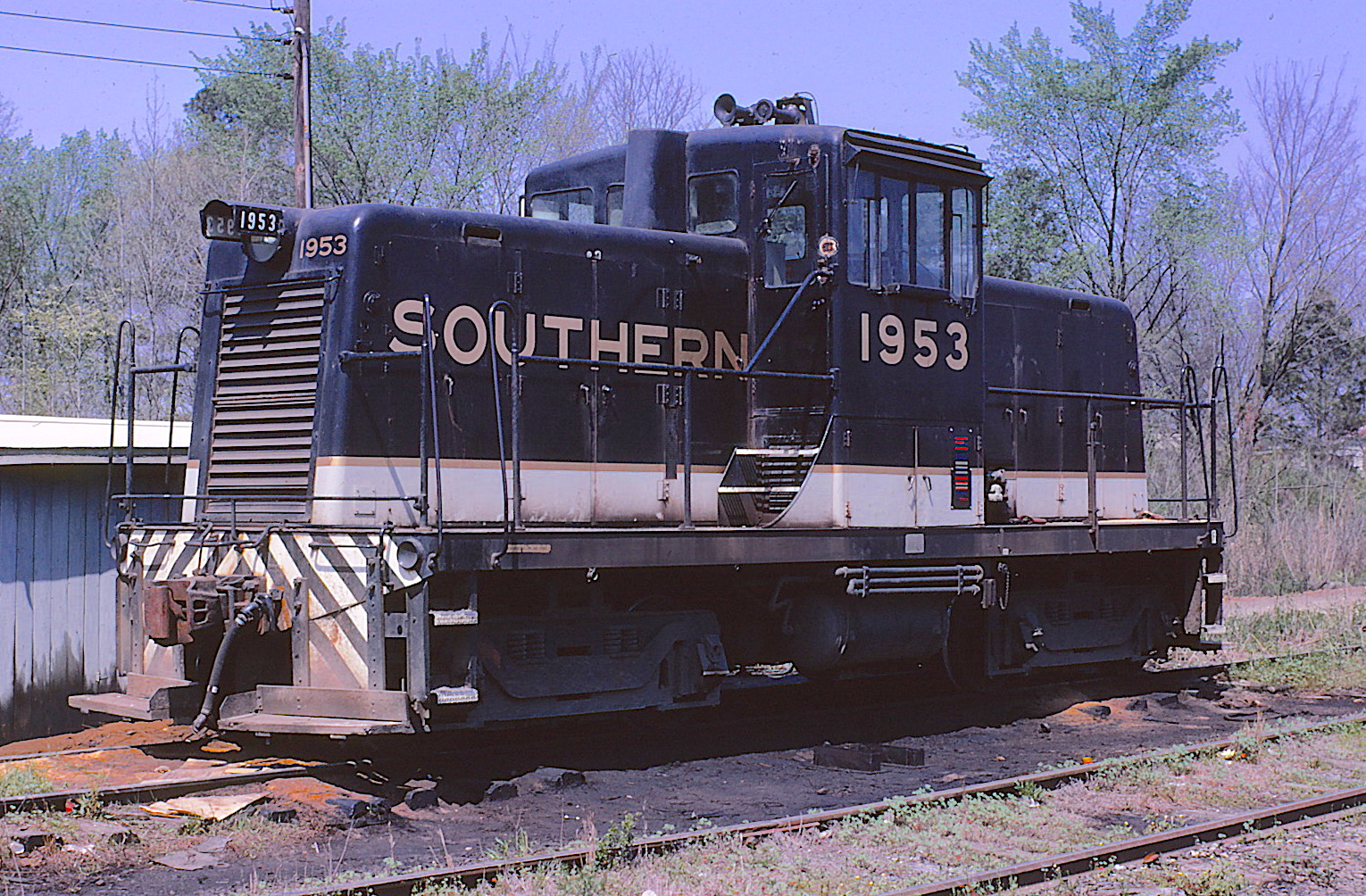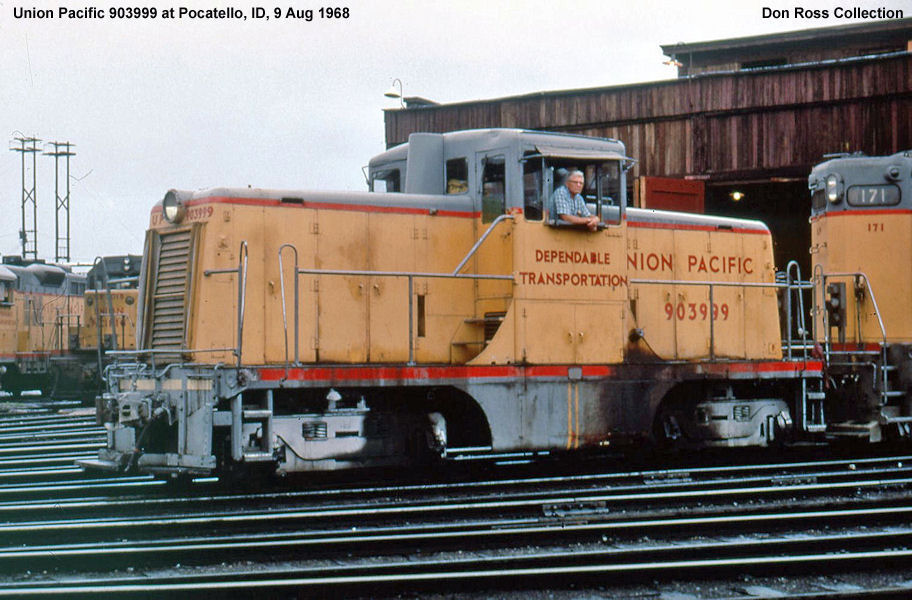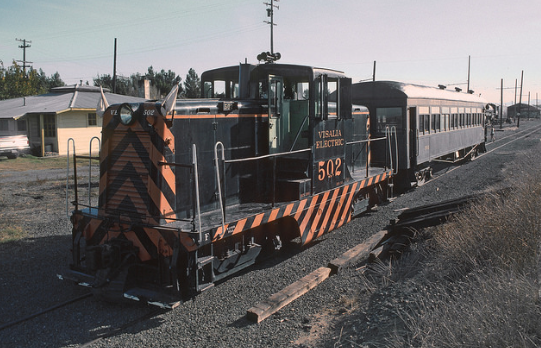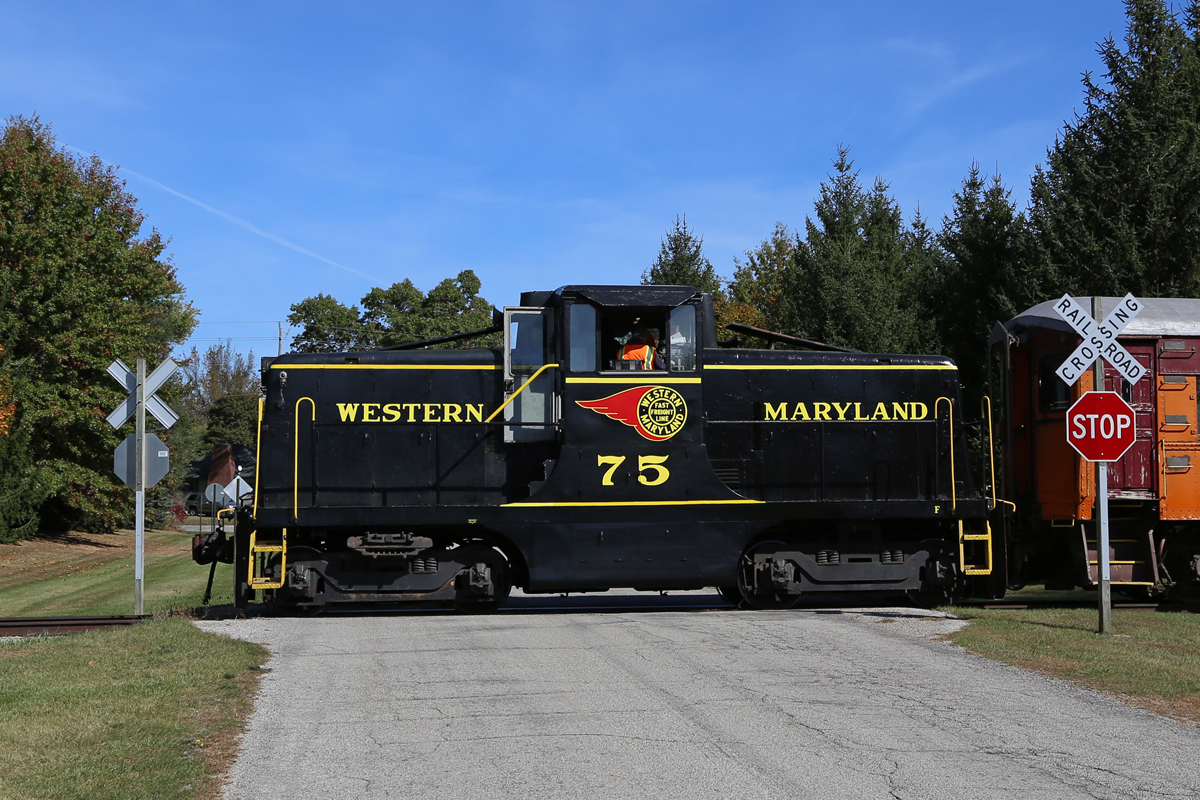The 90,000 lb. Rule Spawned New GE Model |
|
|---|---|
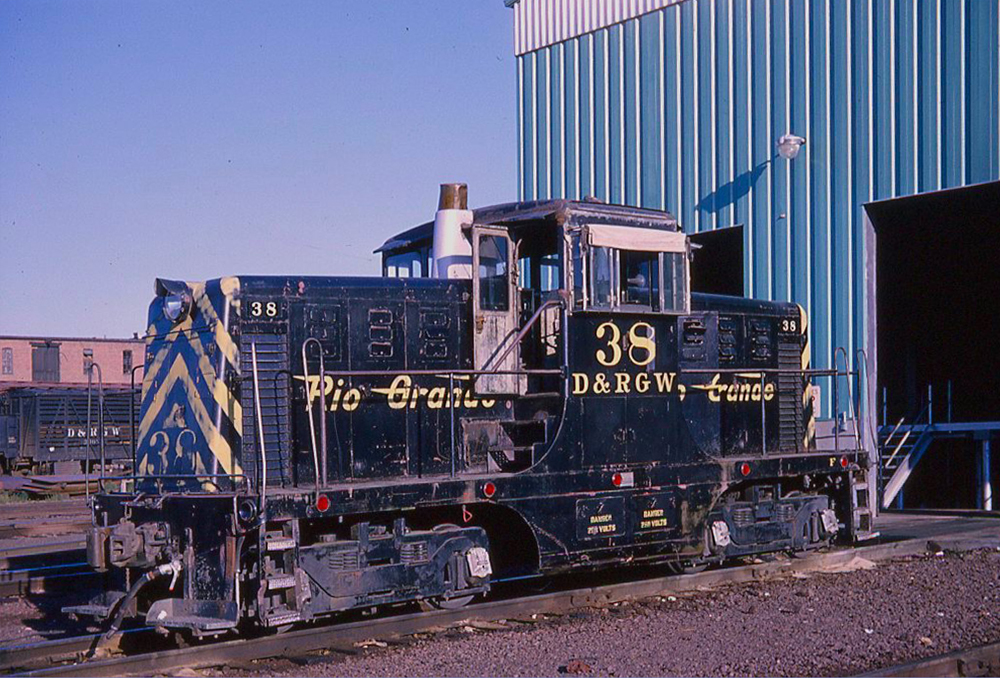 |
|
| The railroad industry and locomotive operating unions signed an agreement in 1937 that
specifically eliminated the need for a second man (fireman - in the days of steam) in the
cab of a diesel locomotive that was assigned to switching duties in a yard or within a designated
switching area if the weight of the loco was less than 90,000 pounds on driving axles. This
measure did not apply to industrial nor military railroads. Subsequently, General Electric
built the 44-Tonner to capitalize on the rule, as well as the potential new market. Nearly 350 of
the small locomotives were produced between 1940 and 1956. Thirty Class 1 North American
railroads purchased the 88,000 lb. center-cab switcher which delivered 380 horsepower to the rail.
(D&RGW #38 stands idle outside the Burnham Diesel Shop in Denver, Colorado on 12 May 1964. -- Ed Fulcomer photo)
| |
